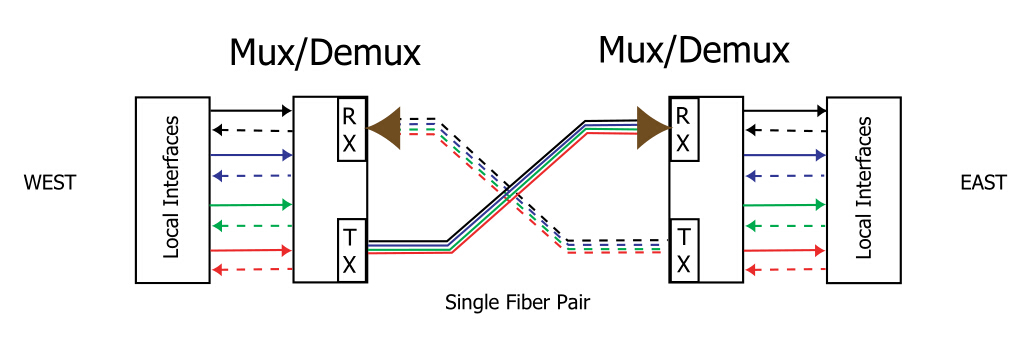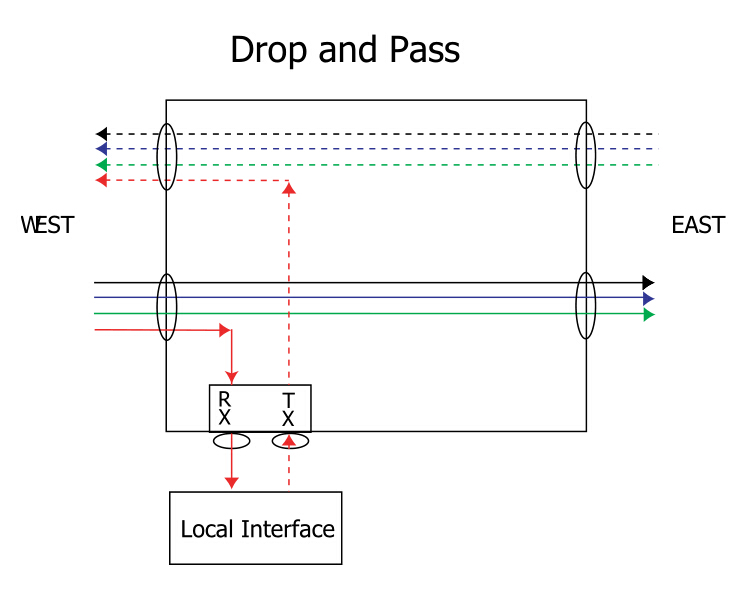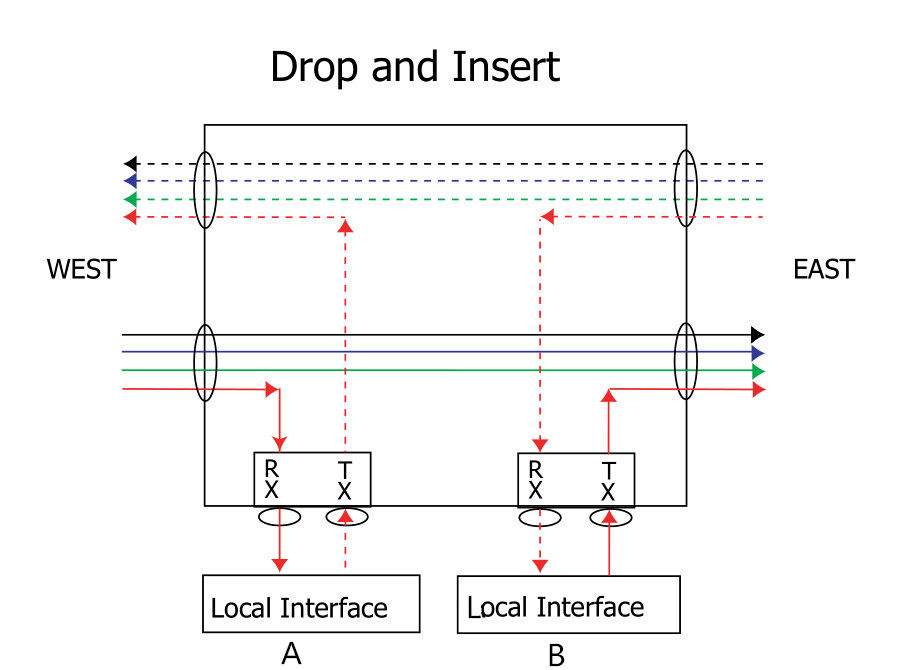CWDM
system is a passive optical solution for increasing the flexibility and
capacity of existing fiber lines in high-speed networks. It increases
fiber capacity by placing widely spaced, separate wavelengths (between
1310 nm and 1610 nm) from multiple ports onto a single-mode fiber pair
on the network. The CWDM system components are passive and require no
power supplies. This article will introduce the components used in CWDM
system.
CWDM System Components
Generally,
there are three basic components in a CWDM system, which are the
multiplexer/demultiplexer (Mux/Demux), the drop/pass module and
drop/insert module. CWDM applications are described in terms of an
east-west connection. Different colors represent individual channels.
Westbound traffic is represented by dashed lines, while eastbound
traffic is shown with solid lines.

Mux/Demux
The Mux/Demux
based on film filter is the most mature component used in CWDM system.
It combines different channels onto a single outbound (TX) fiber.
Simultaneously, the Mux/Demux receives the same channels from a single
inbound (RX) fiber, separates them into individual wavelengths, and
delivers each to the appropriate local interface. This process expand
the capacity of the existing network fiber cable. The following is an
example of four channel Mux/Demux.

The
four-channel Mux/Demux can be configured to support additional channels
through the expansion port. By cascading the modules in series, you can
increase the total number of available network channels. The channels
connecting to the expansion port must differ from those on the Mux/Demux
to which they are being cascaded.
Drop/Pass Module
The
drop/pass module removes one wavelength-specific channel from the
east-bound fiber and allows the remaining channels to pass straight
through to other nodes along the network. When the drop/pass module
drops the channel from the network, it sends the data to a local
interface. The local interface sends the same channel back to the
drop/pass module for transmission in the westbound direction, thus
completing the point-to-point connection between the local interface and
another device located in the west. That other device may be a
Mux/Demux, drop/pass, or drop/insert module.

Drop/Insert Module
The
drop/insert module provides two local interface ports. One port removes
a wavelength-specific channel from the network fiber in one direction,
and the other port adds that same channel back onto the fiber in the
opposite direction. Because the drop/insert module supports two separate
pathways going in opposite directions, network viability in a ring
topology is ensured even if there is a break in the network.
On
the west side, the drop/insert module removes a wavelength-specific
channel from the eastbound fiber and sends it to Local Interface A. To
complete the westbound connection, the drop/insert module receives the
same channel from Local Interface A and inserts it onto the westbound
fiber. The same happens on the east side, except in the opposite
direction. The drop/insert module removes the channel from the westbound
fiber and sends it to Local Interface B. To complete the eastbound
connection, the drop/insert module receives the same channel from Local
Interface B and inserts it onto the east-bound fiber. The drop and
insert completes the point-to-point connections between the two local
interfaces and two other devices located in the east and west. The other
device may be a Mux/Demux, drop/pass, or drop/insert module.

Summary
CWDM
is a simple and affordable method to maximize existing fiber by
decreasing the channel spacing between wavelengths. Since CWDM is a
passive technology, it allows for any protocol to be transported over
the link, as long as it is at a specific wavelength. Because the
multiplexers simply refract light at any network speed, regardless of
the protocol being deployed, CWDM can help to future proof the
networking infrastructure. In all, CWDM is a low-cost and effortless
technology to implement. FS.COM provides a whole series of WDM system
components including CWDM and DWDM. If you need, you can visit
www.fs.com for the details.
Originally published: www.fiberopticshare.com/introduction-components-used-cwdm-system.html
Related article: CWDM & DWDM Mux/Demux Overview
没有评论:
发表评论